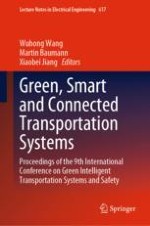2020 | OriginalPaper | Buchkapitel
A Prediction Precision Inference Method for Passenger Alighting Station Based on the Condition Hypothesis
verfasst von : Fan Li, Qingquan Li, Zhao Huang, Jizhe Xia
Erschienen in: Green, Smart and Connected Transportation Systems
Verlag: Springer Singapore
Aktivieren Sie unsere intelligente Suche, um passende Fachinhalte oder Patente zu finden.
Wählen Sie Textabschnitte aus um mit Künstlicher Intelligenz passenden Patente zu finden. powered by
Markieren Sie Textabschnitte, um KI-gestützt weitere passende Inhalte zu finden. powered by
